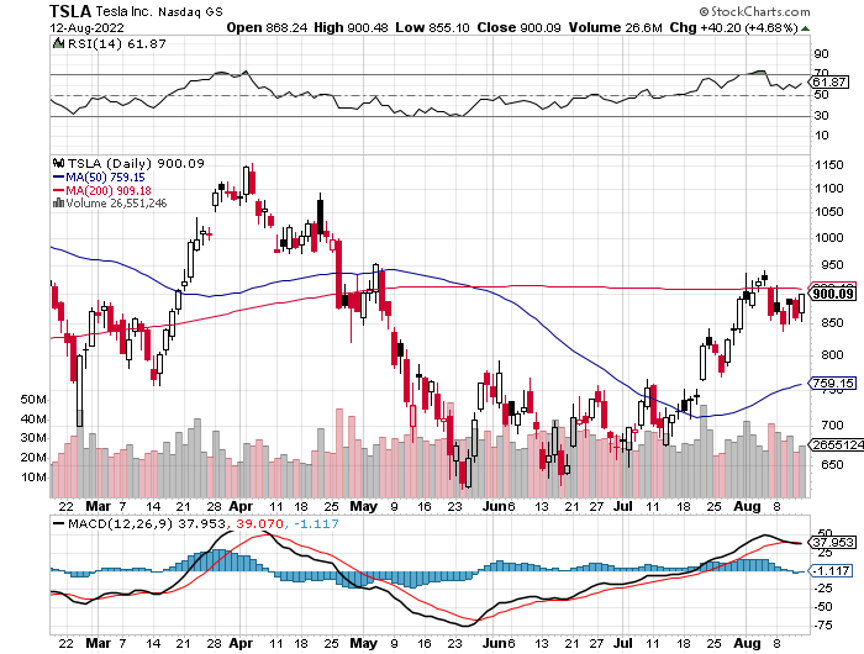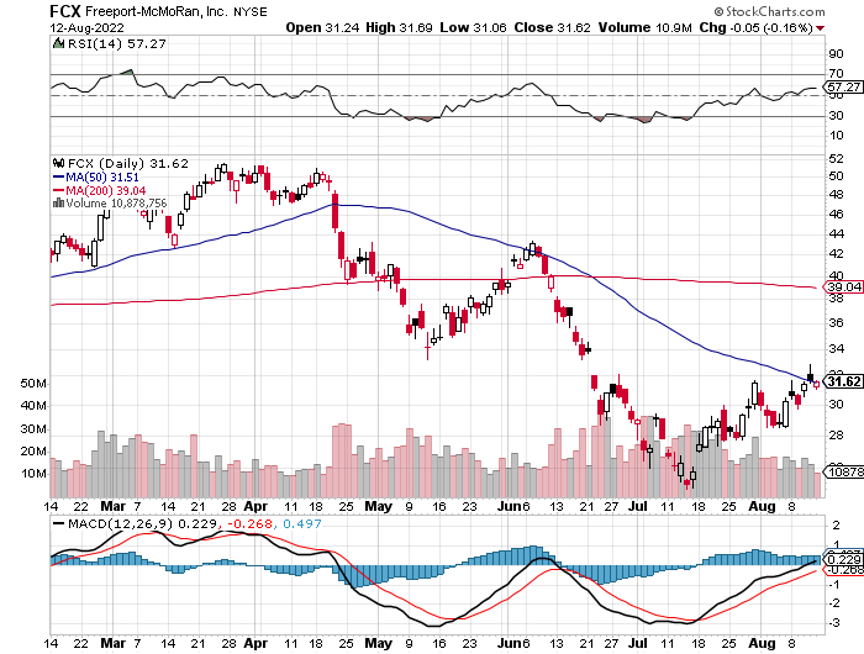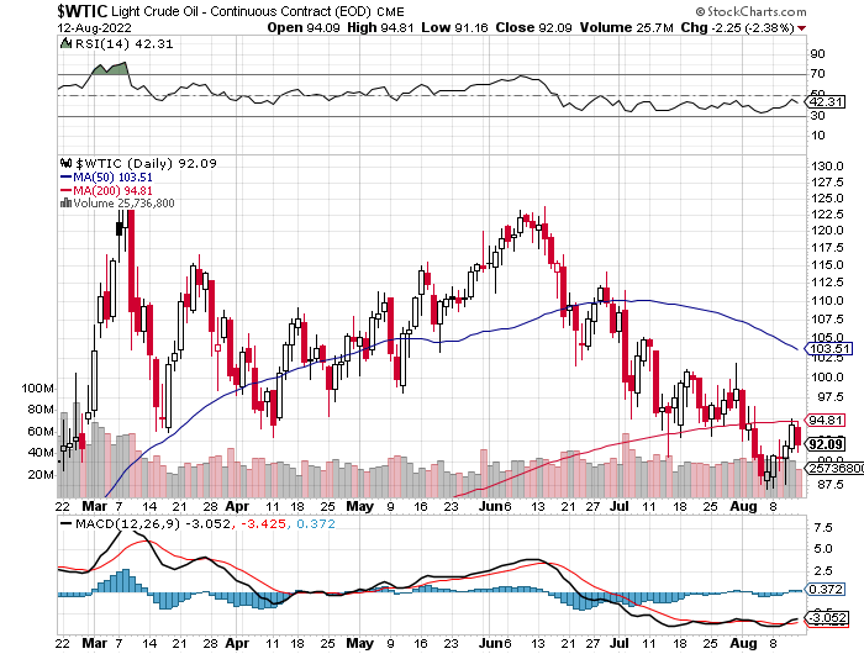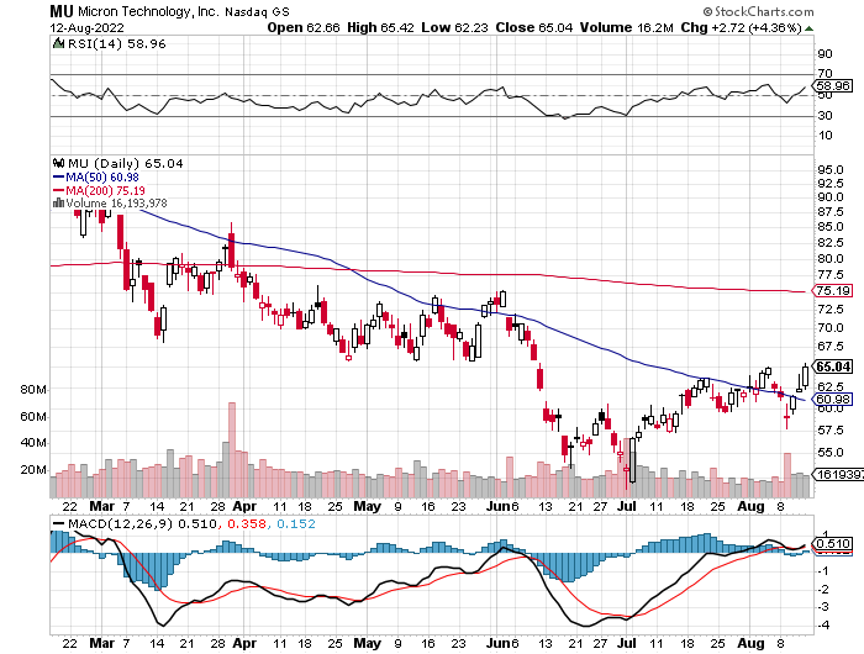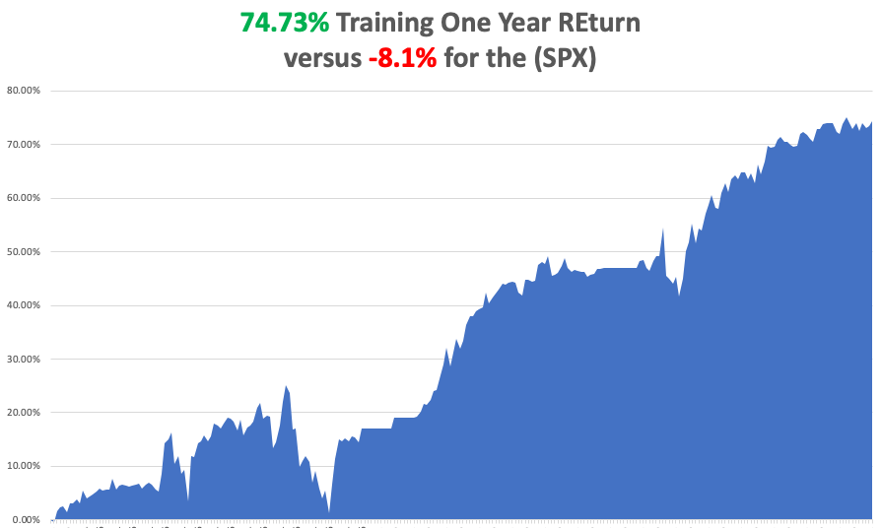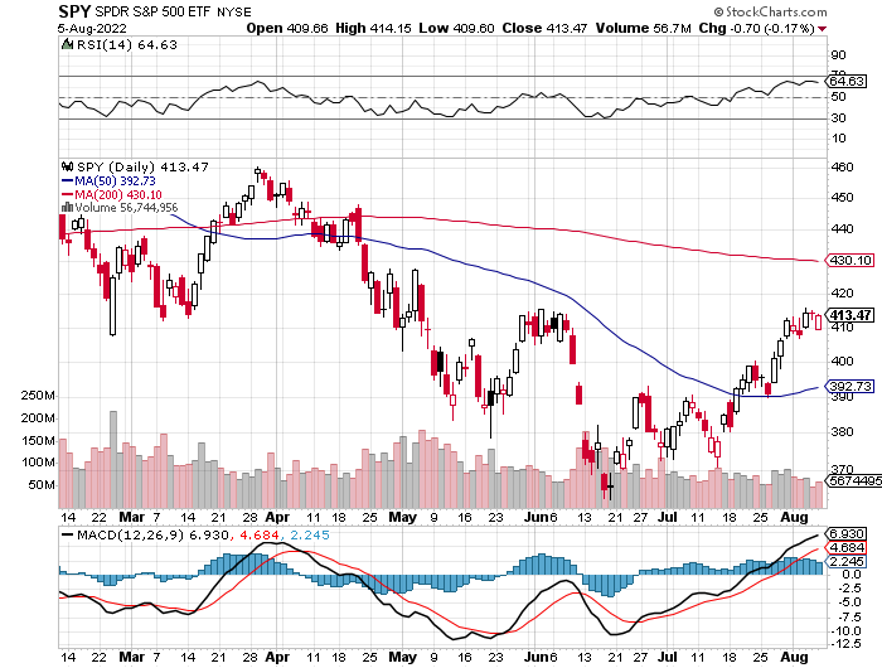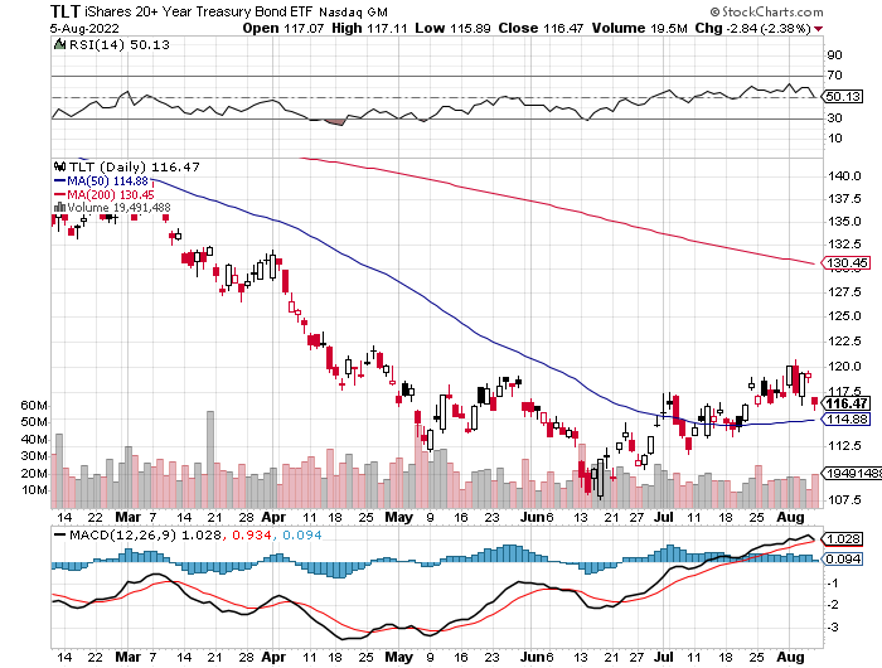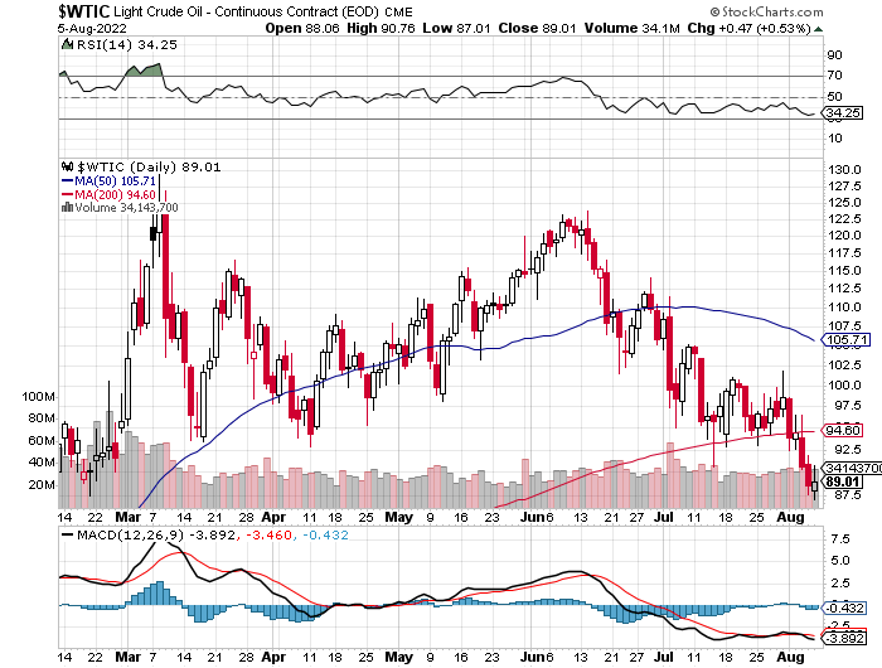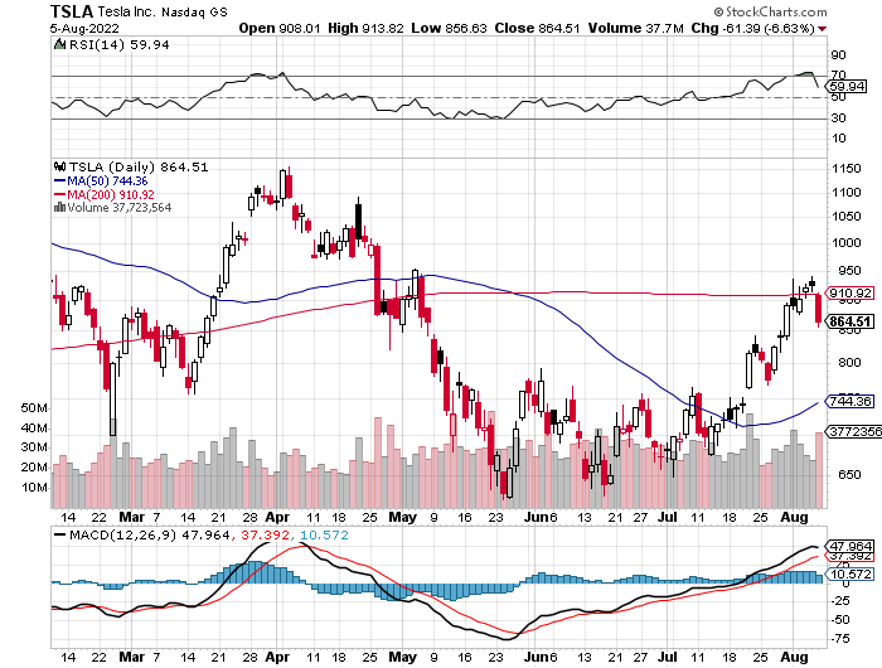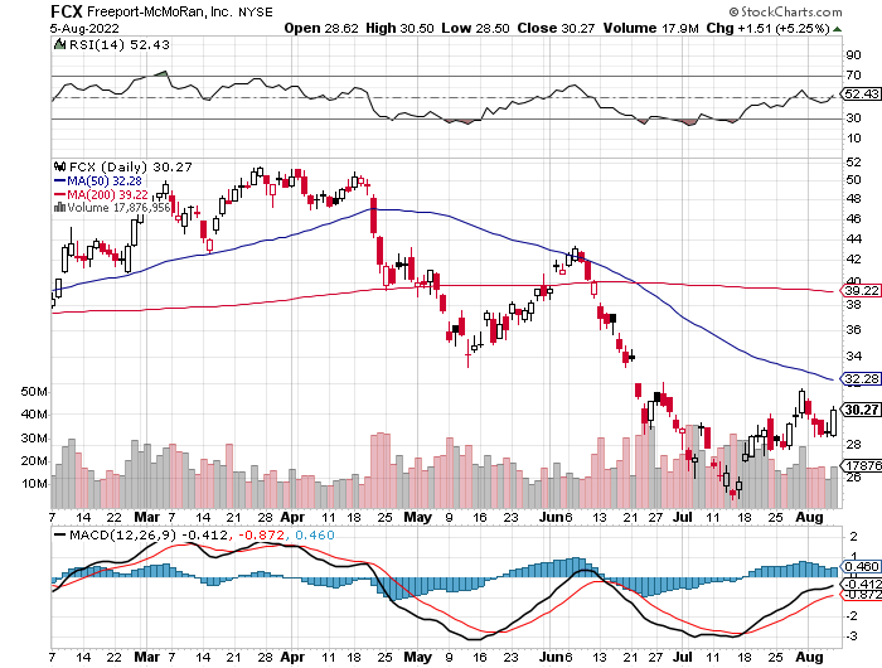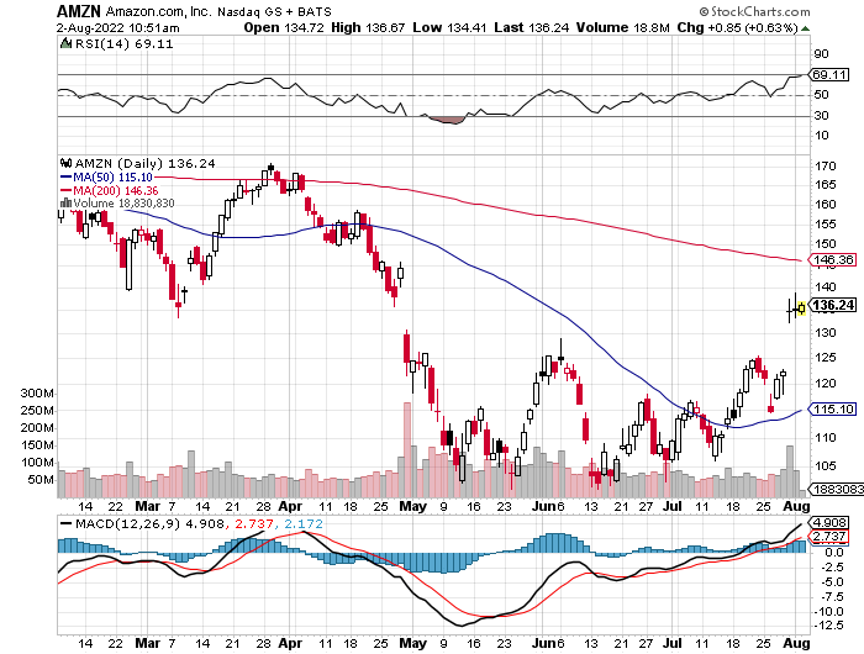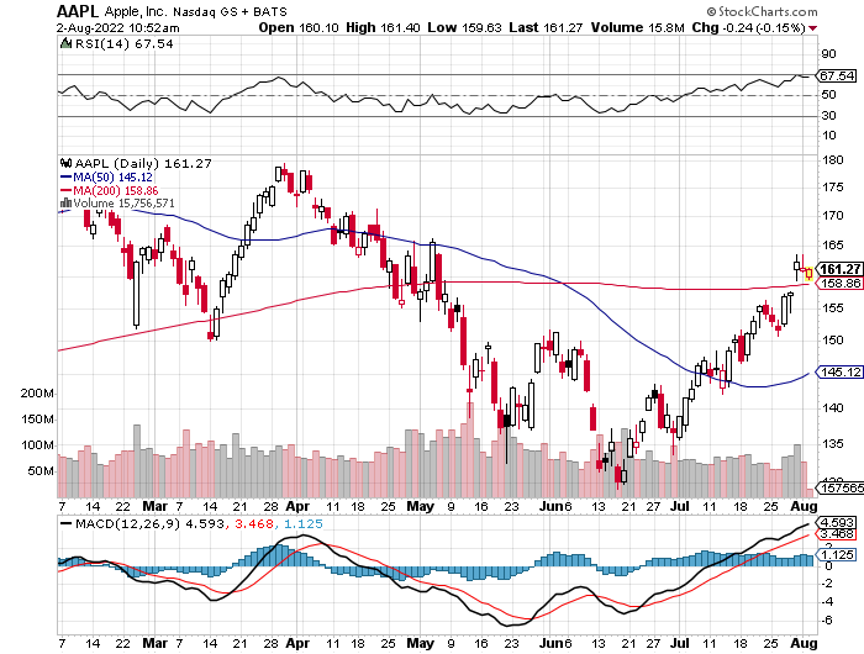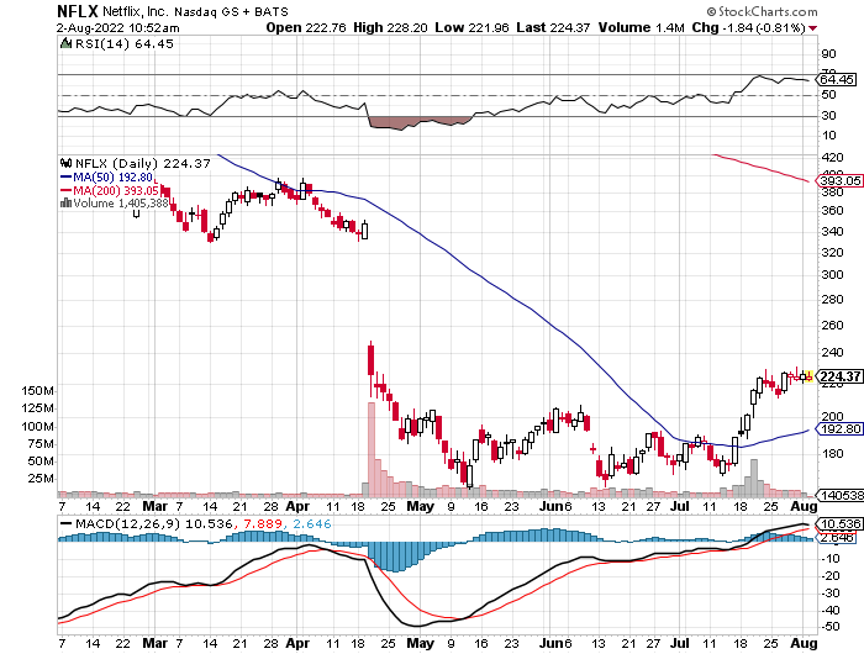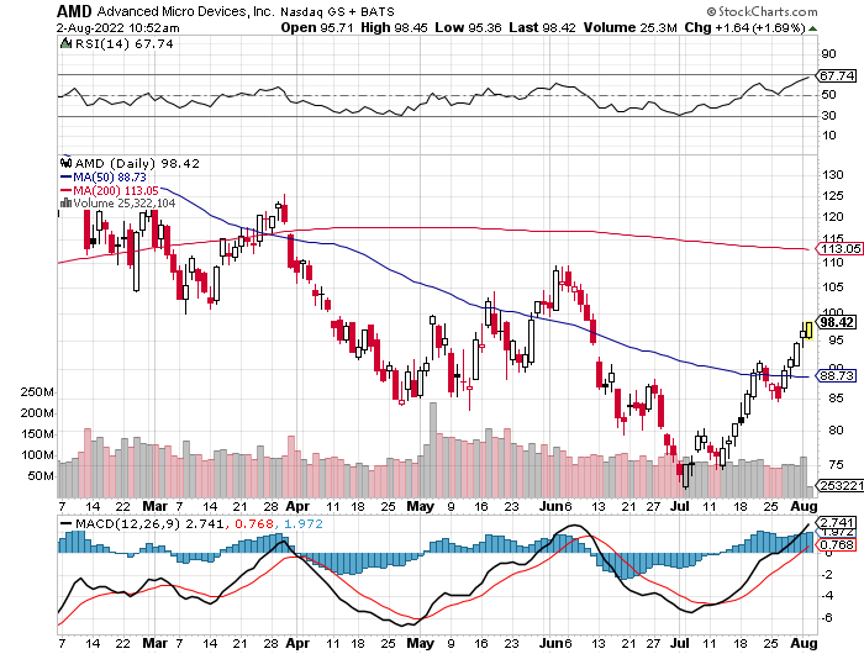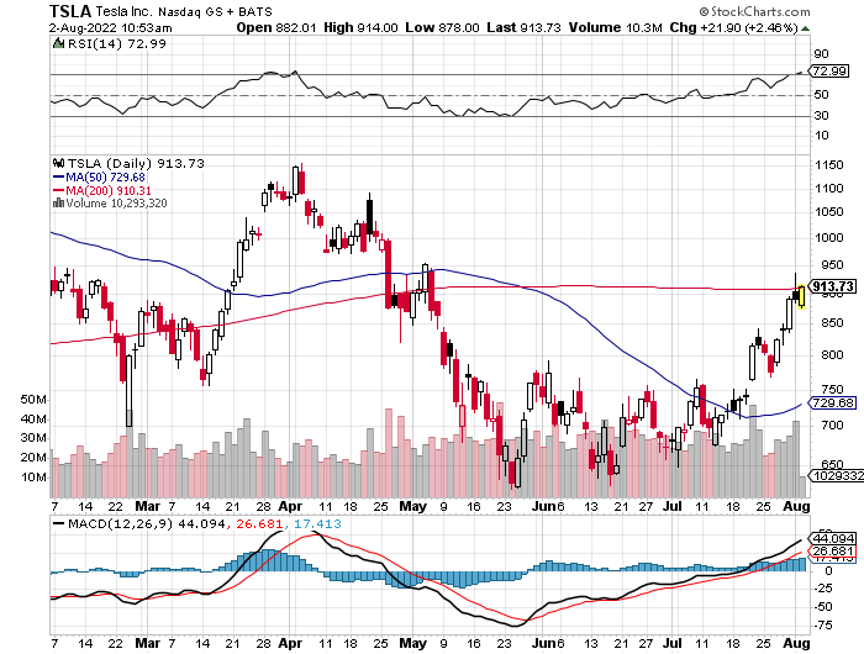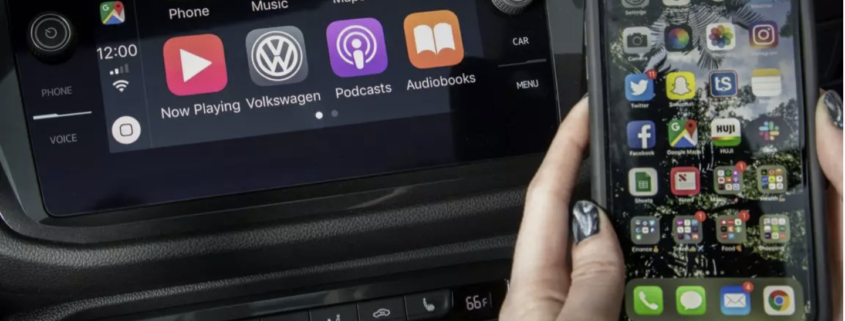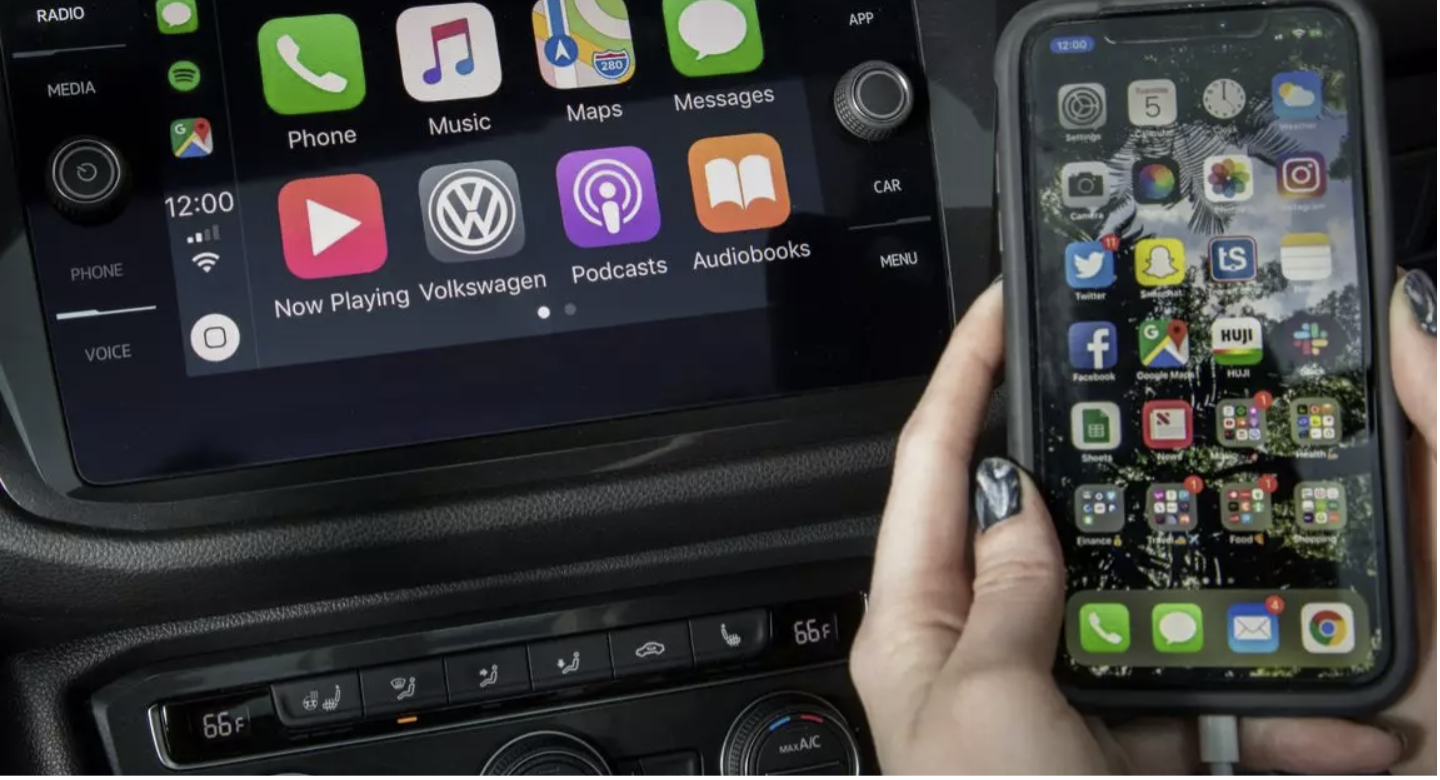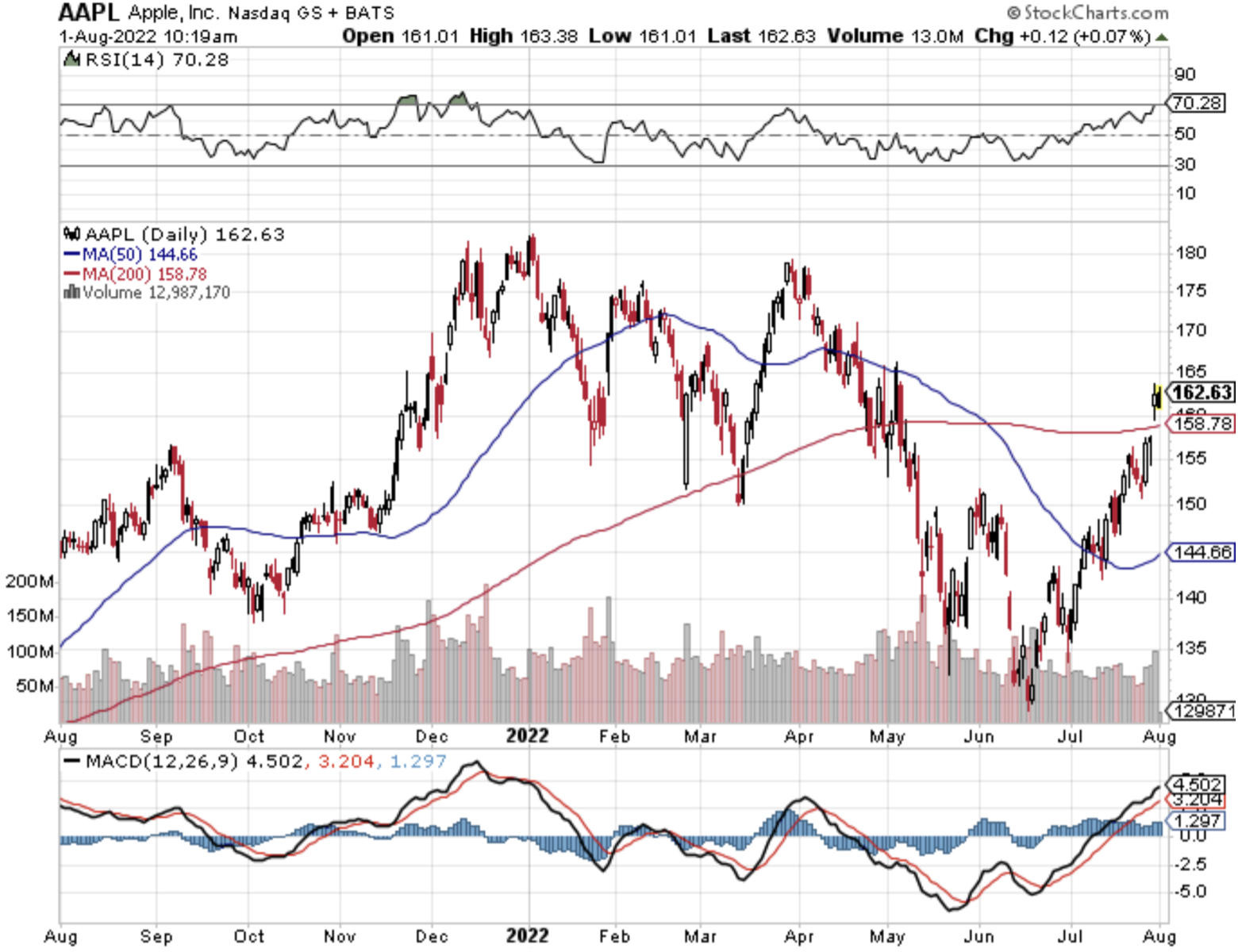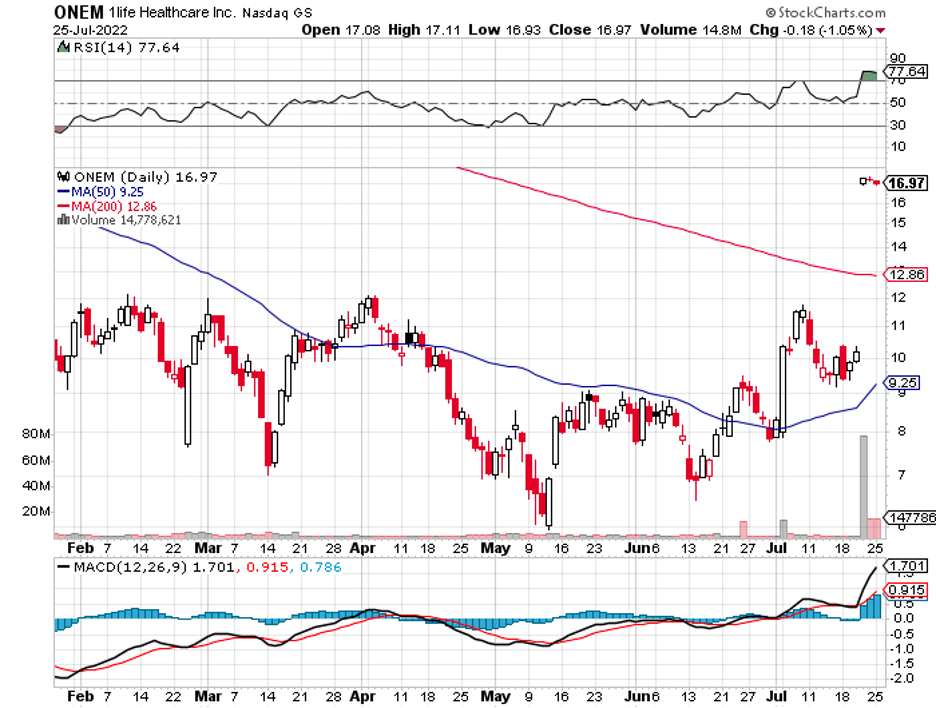Below please find subscribers’ Q&A for the August 10 Mad HedgeFund Trader Global Strategy Webinar broadcast from Silicon Valley in California.
Q: What are your yearend targets for Nvidia (NVDA), Tesla (TSLA), and Google (GOOGL)?
A: Higher for all but I can’t give you the exact date and time. Google has a special situation in that they might be hit with an anti-trust suit in September, so that could cap things. For Tesla, we have the Twitter overhang, and Elon Musk sold $6.9 billion worth of stock last week to fund that. And then Nvidia could have another dive, depending on how much of a glut in chips there is, but I'd be buying any chips from here on. By the way, if Tesla breaks the old high of $1,200, which I expect by the end of the year, we could get to $2,000 very rapidly on yet another massive short squeeze against the permanent Tesla haters, who’ve already been completely decimated by the last 60% move.
Q: How would I play Amazon (AMZN) going forward?
A: Buy the dips. I think they’re going to be the world's dominant retailer going forward and they’re doing the right things and going crazy.
Q: Which sectors?
A: Well, for ETFs, you can look at the ProShares Ultra Technology ETF (ROM). That’s 2x leveraged long tech. But only do that on dips because the volatility of the ROM is enormous since it’s 2x in the most volatile sector. Also, I think we can start taking a look at banks again, what with interest rates rising and a recovery on the horizon, banks could come back into play after sitting at the bottom for the last 3 or 4 months.
Q: I’m doing a LEAP on Freeport-McMoRan Inc. (FCX); should I go for January 2025 or 2024?
A: I’d go longer dated—that way you can get a bigger move and will almost certainly be on a full-on economic recovery, and massive electrification of the auto fleet by 2025, thanks to the climate bill that will be passed Friday. That means the demand for copper is about to go absolutely through the roof—I'm looking for (FCX) to go from $30 to $100 in the next 3 years.
Q: Thoughts on Disney (DIS)?
A: No one can believe how cheap Disney has gotten, it’s been a disaster. Obviously (DIS) took it on the nose with the recession and some of the parks still have limitations on the number of visitors. It should do better and I'm amazed it got this cheap. I would expect a move to the $200 level by the end of next year.
Q: What LEAPS do you recommend for January 2023?
A: Well it’s not really a LEAPS if you’re only going out 6 months; that’s just a long-dated call spread. LEAPS are usually a year or longer. I’d say pretty much anything in any sector will be higher except maybe energy by 2023. We’re not at LEAPS territory yet, but we’re getting close. The next major selloff I might start putting LEAPS out there.
Q: Is the Consumer Price Index (CPI) dropping from 9.1% YOY down to 8.5% meaning the top is in and deflation’s over?
A: I think so, because there are a lot of price declines that were not reflected in this July number that have yet to come. I'm talking about wheat, lumber, and energy. So yes, we could get another big move down in August, and if that’s the case, the Fed may only raise by 50 basis points in September. That's the hope. The things that aren’t going to go down are rental costs and labor costs. We may never get back to the inflation rate that we had 2 years ago of 2%. The long-term average for the last 100 years is 3% and certainly a move down to 4% is possible this year (and would be very welcome by the stock market as part of my long-term bull case).
Q: What are your thoughts on Elon Musk selling $6.9 billion worth of Tesla shares?
A: It’s amazing he sold that amount of stock last week and only went down $100. It does remove a big overhang on the stock and paves the way on a much bigger move up later in the year. By selling the $9 in January and $7 now, that’s $16 billion he sold this year. He could almost pay for Twitter with a little outside bank financing.
Q: How far above current prices should I place a LEAPS?
A: It depends on where the market is; if we’re having a cataclysmic selloff down 1,000-point days, then you can have the luxury of going 10%, 20%, or even 30% out-of-the-money; and that of course gets you a 100%, 200% and 300% returns. If we have a higher low, then you may want to go lower risk and go at the money, that might get you a 50% return. On LEAPS that are only slightly in-the-money, even those generate 25% returns one year out with the most conservative possible position.
Q: Would you load the boat on dips?
A: I would but remember: a dip is not one hour or on down days, it’s like half of the recent gain, which would be down 1,500 Dow points, or all of the recent gain, which would be down 3,000 points. So be careful that you don’t get too aggressive just because you’ve gotten bullish.
Q: Do you think the semiconductor chips will lead the tech recovery in the second half of the year?
A: I do, but we do have an inventory problem to digest first, and we have to figure out the implications of the CHIPS act that was signed this week which makes available a couple hundred billion dollars to build new chip factories in the US. Chip companies are particularly challenged right now because they have to provision for a recession which is going to cut chip demand, and they also have to provision for a potential oversupply created by the CHIPS Act. Remember that for the industry, creating safe supplies of chips means more lots of chips at lower prices for consumers. Great for us, great for the auto industry, not so great for chip companies. You have to be careful. On the other hand, on the bullish side, chips are being designed into more products faster and in larger numbers than ever before. This is the main reason why most investors underestimated the chip industry for the last 10 years. That also is a factor that’s accelerating. The average car now has 100 chips. 20 years ago they had maybe 10 chips, and 30 years ago they had none.
Q: Will the eventual big win of Ukraine against Russia result in inflation going back to 2%?
A: No, but it will result in it going back to 3% or 4%, which we could hit next year. You get oil back down below $50, gasoline down to $2/gallon, and the world's food supply opened up once again, and inflation will disappear in a heartbeat.
Q: What’s the deal with the 1% buyback tax in the inflation reduction package?
A: Well they had to get revenue somewhere, and 1% is so small it won’t inhibit anyone from buying back stock, especially if it makes the CEO a billionaire. That is a great incentive—even if you had a 50% tax, they would still be doing buybacks for things like Apple (AAPL), Microsoft (MSFT), and the other buyback players.
Q: What will high energy prices do to crypto?
A: It might actually make it go up because the cost of electricity feeds straight into the manufacturing/programming cost of crypto. And if you notice, Bitcoin bottomed at $17,000 per bitcoin. But that's exactly where the new mining cost is. Just like all of the commodities, when you hit cost of production, the supply suddenly dries up because nobody can make any money at it.
Q: Will US homebuyers buy the dip since mortgage rates have come down?
A: Yes, and we’re already seeing that in the statistics. The fact is we still have a huge housing shortage in the United States. You don’t get big price falls when you have a shortage of supply, and you have 10 million millennials who still need to trade up from their one and two-bedroom apartments all over the country. So, things may stall a bit in home buying, but I don’t think you get very big price drops.
Q: Do you think the US consumer is strong?
A: They never stopped being strong, even throughout recession fears. Never, ever bet against the propensity of Americans to spend money, both individuals and governments.
Q: What are the chances the US goes to war with China over Taiwan?
A: Zero. # 1 China doesn't have ships, #2 we have the 7th Fleet there, and #3 they have been threatening to invade Taiwan for 70 years and done nothing. The Taiwanese are used to this. Though there is the other side issue that most of the other private companies in Taiwan are already owned by the Chinese and have Chinese capital, so it’s unlikely they want to blow up their own facilities. So, the answer is no.
Q: What is the Long term outlook for gold and silver?
A: It’s been dead for so long that I’m not inclined to rush into gold. But you have to expect that when you get a recovery in the commodity boom, it’s going drag gold and silver along with it. I see upsides for both of these, especially silver.
Q: Should student loans be paid off by the federal government?
A: I think yes, because as long as these people have massive debts, they cannot borrow and they cannot enter the US economy as consumers. If you forgive all student debt, you unleash 10 million new customers onto the market who can now borrow, get credit cards, and take out home mortgages. As long as they have massive debts, they can’t do that.
Q: With all the major companies in the world moving to EVs, where are we going to get these commodities?
A: We’re not. Tesla (TSLA) has already locked up major supplies of commodities over the next 10 years, and everyone else will have to pay more money. Some of the weaker producers like Ford (F) and General Motors (GM), are being restrained on shortages of not just chips but also basic commodities like chromium for stainless steel. They’re going to have a real problem competing with Tesla, which is why you own Tesla.
Q: What do you think about the unprofitable tech companies like those in the ARK ETFs (ARKK)?
A: I would avoid those for now. Why take on additional risk buying a non-earning company when the highest quality companies are selling at the cheapest valuations in ten years? Maybe when the big companies like Apple get overvalued—go up another 100% — then you might look at the smaller companies if they’re still cheap. But the risk/reward on the nonearners right now is no good, while it’s fantastic in the large tech companies. That is my opinion and I’m sticking to it.
Q: It seems Russia’s strategy has mirrored those of the Czars.
A: Actually, what they’re doing is repeating their WWII strategy, which worked in 1945— not so much in 2022; and that was massive artillery barrages against retreating Germans. Except this time Ukrainians are not retreating and have far more modern weapons than the Russians.
Q: Would you buy Micron Technology (MU) on bigger dips?
A: Absolutely yes; but again, wait for the down days. You have plenty of volatility in chip stocks, no need to pay up or chase higher prices.
To watch a replay of this webinar with all the charts, bells, whistles, and classic rock music, just log in to www.madhedgefundtrader.com, go to MY ACCOUNT, click on GLOBAL TRADING DISPATCH, then WEBINARS, and all the webinars from the last 12 years are there in all their glory.
Good Luck and Stay Healthy
John Thomas
CEO & Publisher
The Diary of a Mad Hedge Fund Trader



